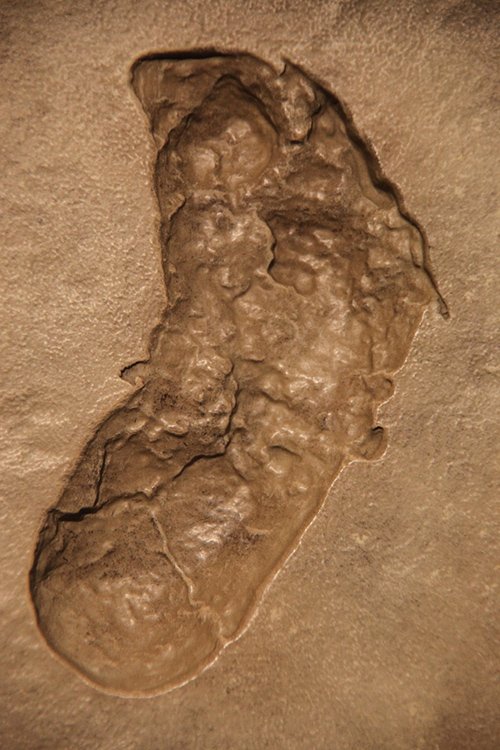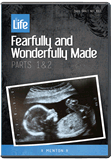What Are They, Really?
Hall of Life—Human Exhibits
on May 30, 2016Ardipithecus
This genus is composed of a group of extinct apes.
Australopithecines
This is a group of extinct apes. Although often portrayed otherwise, australopithecines had obviously ape skulls, pelvises, hands, and feet.
Australopithecus afarensis (Lucy)
Paleoanthropologists Jack Stern and Randall Sussman have reported that Lucy’s hands are “surprisingly similar to hands found in the small end of the pygmy chimpanzee-common chimpanzee range.” They report that the feet, like the hands, are “long, curved and heavily muscled” much like those of living tree-dwelling primates. The authors conclude that no living primate has such hands and feet “for any purpose other than to meet the demands of full or part-time arboreal (tree-dwelling) life.” (American Journal of Physical Anthropology 60, 1983, pp. 279–317.)
A more recent report concludes that the australopithecine jaw closely resembles that of a gorilla. See www.answersingenesis.org/human-evolution/lucy/farewell-to-lucy/.


Lucy exhibit at the Creation Museum. See creationmuseum.org for more details.
Cro-Magnon
Far from being “primitive,” Cro-Magnons were early relatives of ours, fully human. Living sometime after the dispersion at Babel, this group of people knew how to build huts, make stone paving floors, construct kilns, and bake pottery. They made tools out of bone, flint, ivory, antler, and wood. They knew how to carve flutes of bone, make jewelry, and sew clothing. Their artwork (cave murals) was “worthy of a place among the masterpieces of world art” (Encyclopedia Britannica, 15th ed., volume 5, p. 291).
Homo erectus
This was a group of our ancestors who used stone tools, made fire, buried their dead, carved rock into figurines, built shelters, and even used watercraft. Of this taxon, Professor Marvin Lubenow (who has studied the claims regarding human evolution for 30 years) writes:
When we compare the crania of Homo erectus with those of early Homo sapiens and Neanderthal, the similarities are striking. My own conclusion is that Homo erectus and Neanderthal are actually the same: Homo erectus is on the lower end, with regard to size, of a continuum that includes Homo erectus, early Homo sapiens, and Neanderthal. (Bones of Contention, Grand Rapids: Baker, 2004, 2nd edition, p. 127.)
Homo ergaster
This was a name suggested for some East African Homo erectus fossils.
Laetoli footprints
These footprints, although linked with the australopithecines, actually belong to a human. According to evolutionist R.H. Tuttle:
Strictly on the basis of the morphology of the G prints [prints found at a site labelled “G”], their makers could be classified as Homo sp. because they are so similar to those of Homo sapiens, but their early date would probably deter many paleoanthropologists from accepting this assignment. I suspect that if the prints were undated, or if they had been given younger dates, most experts would probably accept them as having been made by Homo … .
If the prints were produced by a small species of Australopithecus (southern ape) then we must conclude that it had virtually human feet which … were used in a manner indistinguishable from those of slowly walking humans. … The feet that produced the G trails are in no discernible features transitional between the feet of apes … and those of Homo sapiens. They are like small barefoot Homo sapiens. (M.D. Leakey and J.M. Harris, eds., LAETOLI—A Pliocene site in Northern Tanzania. London: Clarendon Press, 1987, pp. 503–523.)

By Tim from Washington, D.C., United States of America [CC BY-SA 2.0 (http://creativecommons.org/licenses/by-sa/2.0)], via Wikimedia Commons
Cast of the Laetoli footprints, on display in the Hall of Human Origins at the Smithsonian Museum of Natural History in Washington, D.C.
Homo habilis
This is an invalid taxon composed of a mixture of several species, with most of the fossils belonging to australopithecines, according to Professor Marvin Lubenow (see www.answersingenesis.org/hominids/fact-versus-fiction-the-recent-ethiopian-fossils/).
Neanderthal
Neanderthals were fully human. According to Neanderthal authority Erik Trinkaus:
Detailed comparisons of Neanderthal skeletal remains with those of modern humans have shown that there is nothing in Neanderthal anatomy that conclusively indicates locomotor, manipulative, intellectual, or linguistic abilities inferior to those of modern humans. (E. Trinkaus, “Hard Times Among the Neanderthals,” Natural History 87:10, p. 58.)
For more information, see www.answersingenesis.org/human-evolution/neanderthal/the-neandertals-our-worthy-ancestors/ and www.answersingenesis.org/human-evolution/neanderthal/the-neandertals-our-worthy-ancestors-part-ii/.
Related Media
Did Humans Really Evolve from Apelike Creatures?
Related Downloads
Ethiopia—They Love Lucy!
Audio DownloadChicago Field Museum Study Guide
PDF DownloadNeanderthals—They’re Human, Too!
Audio DownloadMuseum Guide
Are you exasperated by all the hype about "millions of years" in secular museums? The Museum Guide will help!
Browse Kids BookRecommended Resources
- © 2025 Answers in Genesis
- Privacy Policy
- Contact
- About




